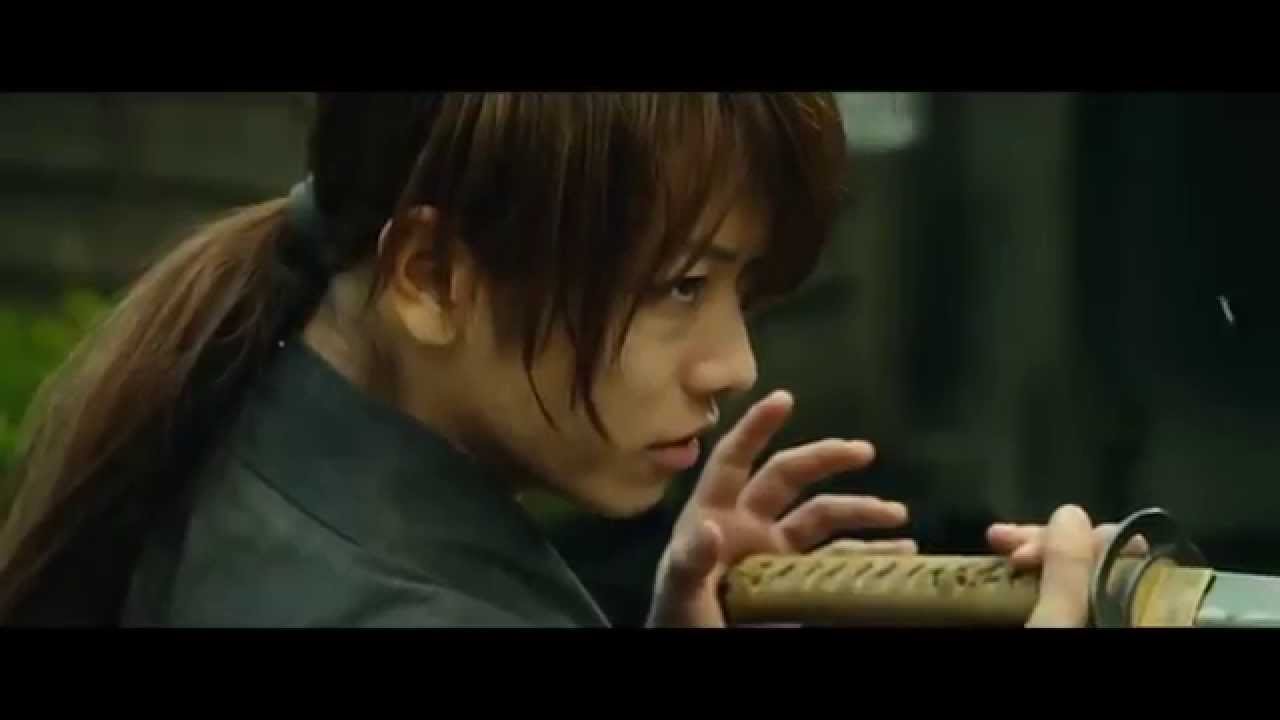By Chlotrudis Independent Film Society
Rating: 4.25 cats
Director: Keishi Otomi

Original language title: Rurôni Kenshin: Densetsu no saigo-hen
Country: japan
Year: 2014
Running time: 134
IMDB: http://www.imdb.com/title/tt3029556
Jason says: “RUROUNI KENSHIN: KYOTO INFERNO and RUROUNI KENSHIN: THE LEGEND ENDS were released within a month and a half of each other in Japan, emphasizing how they function more as a two-part sequel to 2012’s first film than as the latter two-thirds of a trilogy. Granted, when the series comes to North America, it will probably do so in one fell swoop on video, so any pacing issues those of us who saw them a year apart can likely be discounted. Put that aside, and THE LEGEND ENDS plays as a heck of a second act and climax to this larger sequel.
“It picks up right where its predecessor left off, with Kenshin Himura (Takeru Sato) diving from the black ironclad ship of Makoto Shishio (Tatsuya Fujiwara) to save his beloved-even-if-he-won’t-admit-it Karou Kamiya (Emi Takei). Instead, fate has him wash up at the home of original sensei Seijuro Hiko (Masaharu Fukuyama), whom he begs to teach him the ultimate ‘Dragon Flight of Heaven’ technique, which he sees as the only way to defeat Shishio. As Kenshin spars with Hiko (both with weapons and words), his other friend learn Karou was rescued at sea by a passing freighter, but is comatose, and Shishio uses the immense firepower of his stolen battleship to blackmail the new government into declaring Kenshin an outlaw.
“Keishi Otomo, who has co-written and directed the entire live-action series, has roughly two and a quarter hours here, and the way he deploys them is kind of odd for a standalone movie, spending a lot of time on the characters either training or healing up after the events of the last film, rehashing points from the previous films without reiterating their foundations or having particularly new insights, so it sometimes comes across as filling time as much as anything (sometimes, as with the character played by Yusuke Iseya, they feel like holdovers that should have been resolved in the previous episode). It’s not necessarily evenly distributed, either – one character from the first two films – Yu Aoi’s Megumi – doesn’t show up until roughly an hour in and never actually has much to do, demonstrations of how long-running serials like this accumulate characters that can be sidelined in the manga but would feel missing if not given something to do in a film.
“Which is not to say the first half of the movie is dull; Otomo and his editors do a decent juggling act with their three main stories and various sub-stories, and while its being set against a real-world historical backdrop means that some of the background issues cannot be resolved in the context of the film, it does give the story a few added wrinkles. Munetaka Aoki provides good comic relief as Kenshin’s street-fighter friend not particularly good at waiting, with Kaito Ohyagi balancing him out as the sincere orphan that Karou took in. Smaller action scenes are peppered in among the intrigue to whet the appetite.
“Otomo probably doesn’t actually bring out the main course at the halfway mark, but it doesn’t seem to be long after that when he kicks off the climactic action piece, and it’s a doozy, what seems like an hour of Kenshin and his allies fighting their way through the ironclad to get at Shishio, who has a set of fierce lieutenants of his own, as well as a seemingly-unlimited supply of henchmen who must be very glad that Kenshin has pledged never to kill again, even if his back-bladed sword will leave a heck of a bruise after his opponent regains consciousness. Kenji Tanigaki once again stages the action, and he’s still bringing Hong Kong-style speed and excitement to the often-sedate samurai drama without having it feel inauthentic. It’s an incredibly solid long run of action that never starts to feel repetitive or wearing.
“A large part of that, I think, is that Otomo never seems to quite hand the movie over to Tanigaki when the fighting starts. There’s a little action bit in the run-up that I really like, where Kenshin basically walks through a roomful of cops swinging staffs at him that reminds the audience of just how good he is after seeing him humbled against his sensei in the early going, and the big action extravaganza is peppered with good character moments – Aoki gets three or four chances to be Han Solo shooting at Darth Vader in The Empire Strikes Back while shared looks between the heroes create a lot more audience involvement than the few seconds they take could seem to carry. As the film barrells toward its finale, Otomo happily lets things get larger than life, especially in terms of Shishio, fighting with abandon as his rapidly rising body temperature often sets his sword on fire.
“Heck, Otomo drops a line right in the middle of this fight that would generally get a laugh from the audience for being self referential (at least as the subtitles present it), but instead they just kept going, excited to see what would happen next. That’s a heck of a good run to end a movie on, whether you see it as the climax of a two-plus or four-and-a-half-hour movie. And while the film series is a hit and there’s apparently more manga to adapt, I wouldn’t be surprised to see this hold up as the finale – it may not be perfect, but a fourth movie is unlikely to end with a bigger bang. 4.25 cats
“Seen 4 August 2015 in Theatre Hall Concordia (Fantasia International Film Festival: Action!, DCP)”
